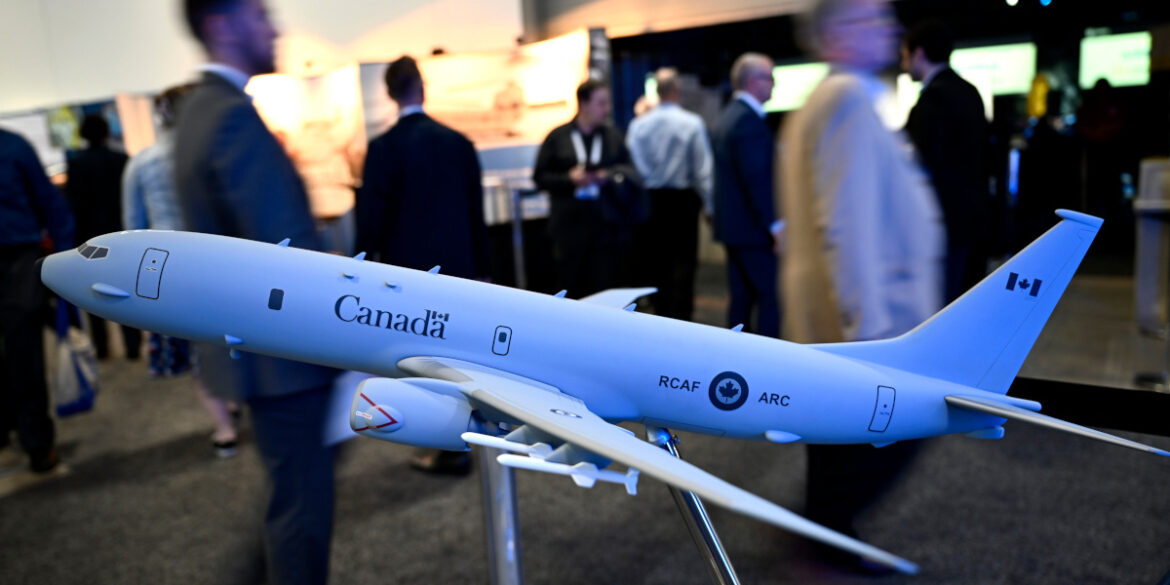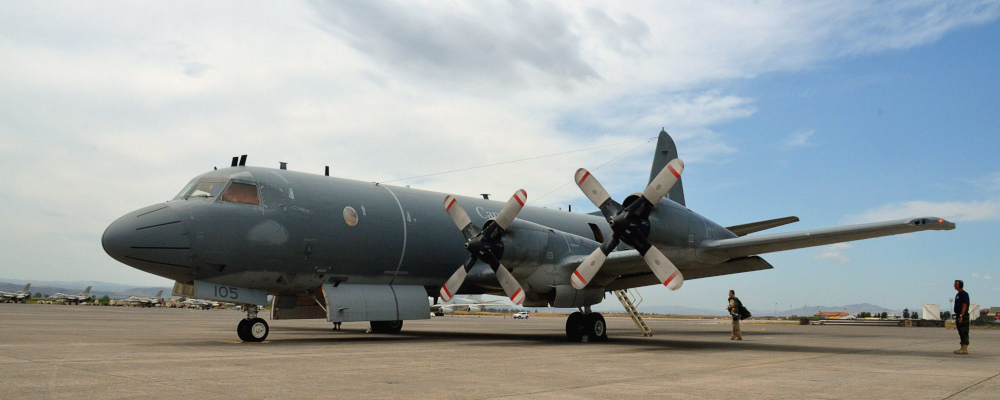The confirmation of Canada’s acquisition of the P-8A Maritime patrol aircraft closes the book on another controversial military procurement decision, the fallout of which was surprising but avoidable.
As discussed in a previous column, the CP-140 Aurora fleet is one of the workhorses of the Royal Canadian Air Force. Its anti-submarine warfare and intelligence surveillance and reconnaissance (ISR) capabilities are considered among the best capabilities in the CAF. To replace it, reports say, Canada will acquire 16 P-8 maritime patrol aircraft from Boeing Aerospace for approximately $5.9 billion USD.
Originally, the government had stated in the 2017 Strong Secure and Engaged strategy document that it would replace the Aurora in the 2030s timeframe, with what was known as the Canadian Multi-Mission Aircraft (CMMA), with an anticipated funding range of around $5 billion CAD.
This plan, however, turned out to be inadequate for maintaining Canada’s maritime and overland patrol capability. To operate the CP-140 safely for another decade, maintenance costs would certainly rise while aircraft availability would drop. Even with a new round of upgrades, the CP-140 lagged behind an increasingly lethal threat environment, all while entering into its fourth decade of service.
Other foreign users of the Aurora’s airframe are in the process of either retiring the type or completing a transition to a new aircraft—most of Canada’s closest allies now operate Boeing’s P-8 as its natural successor. Furthermore, the planned budget for a replacement was unrealistic in that it would be insufficient to adequately replace the CP-140 fleet with enough capable aircraft to meet their current operational commitments and tempo. Further factors only heightened the urgency of this decision, including the immediate procurement challenges facing the RCAF, such as the F-35 purchase and NORAD modernization. Necessarily, then, the replacement timeline and budget had to be accelerated and increased.
The decision to select Boeing over domestic rival Bombardier for this contract, though, was by no means a sure thing.
From 2020 onwards, Boeing lobbied the Canadian government, presenting the opportunity to acquire the last P-8s on their production line. After delivering over 170 aircraft to ten countries, production is set to end by 2026. Their timing proved to be fortuitous, as the rise in global tensions created a new urgency to modernize the ageing Aurora. The government facilitated the decision to acquire the P-8 by formally increasing the budget for a replacement, from $5 Billion dollars to $8 billion CAD, and in the spring of 2023, Ottawa approached the U.S. government to initiate the purchase process.
These developments were viewed with dismay by Bombardier. The company was likely the only manufacturer that could produce a multi-mission aircraft within Canada’s original timeline. Although Bombardier does not currently produce a multi-mission aircraft, it had ambitions to move into this space, and the CMMA program was seen as an excellent opportunity to develop such a capability.1A development perhaps unknown to the general Canadian public, Bombardier has become an increasingly important defence contractor with its business jet line. It has developed a substantial business internationally, particularly the U.S., in adapting its aircraft for military purposes, largely as carriers for large sensor and communication arrays. Two weeks ago, its Global 6500 was selected as part of the Sierra Nevada corporation’s bid for the U.S. Army Athena-X program for a long-range ISR platform.
Consequently, Bombardier’s indignation was understandable. Moving up the replacement window to the second half of the 2020s effectively excluded them as a potential bidder.2These sentiments were likely heightened by the enmity between them and Boeing, after the latter’s efforts to kill the C-series project in 2017. At the same time, the Canadian government was under no obligation to follow through with the original 2017 plan and timeline, especially when these were unrealistic to begin with.
In response, Bombardier partnered with the Aurora’s current system developer, General Dynamics Mission Systems, to provide a competing alternative to the P-8. Yet there were real challenges to their bid. The challenge of designing and building their CMMA proposal was far in excess of any current or previous project undertaken by the company. It would require adapting the Global 6500 airframe for the complex anti-submarine warfare missions, which included very long range and cruise speed, as well as carrying a much-needed heavy mission systems package including sonar buoys, computers, crews, and a mix of internal and external ordnance. Integrating them onto a much smaller airframe than the P-8, while claiming they would have the equivalent of capabilities, was unrealistic and extremely risky.3For many within the government, Bombardier’s CMMA proposal conjured up memories of the CH-148 Cyclone helicopter project, which has been beset by major cost overruns and lacklustre performance. Moreover, Canada was originally lured by the prospect that it might be able to export the helicopter to other countries, yet no sales have materialized, leaving the CAF operating an orphan fleet.
Despite the challenges facing its bid, Bombardier decided to contest the P-8 purchase. It waged an effective grassroots campaign that lobbied a wider range of policymakers and influential individuals toward their option. This culminated last week in a joint statement by the premiers of Ontario and Quebec on the need for a competition. Yet the suggestion was misleading at best: due to Boeing’s production timeline, a competition would essentially have resulted in Bombardier winning by default.
Another key argument employed was to highlight the indigenous development of Canadian industry over a foreign producer. Their solution would leverage the existing intellectual property developed for the Aurora, which was owned by Canada and could be better tailored for the military’s needs. However, this would require Canada to underwrite the entire cost of the development, a potentially open-ended deal that would be problematic in the coming decades.
If Canada was serious about developing a maritime patrol aircraft, the process to do so should have been launched at least a decade ago and with deep forethought about what it should look like. Furthermore, the economic argument also belied Boeing’s large presence in Canada, and the offset requirement that required them to reinvest money back into Canada. The differences between the two options were not as binary as was suggested.

Bombardier’s aggressiveness in its marketing strategy also left a bad taste in many officials’ mouths. It allowed the DND to easily counter the proposal inside the government by highlighting its risks and potential problems. While a number of individuals were swayed by the economic arguments made by Bombardier, the weight of all the other considerations behind the P-8’s purchase could not be ignored.
For its part, Boeing countered by deputizing U.S. officials to push for Canada to complete its purchase, including Ambassador David Cohen. Considering their disenchantment with Ottawa’s defence posture, it was a powerful tool to deploy. There was also a definite time limit: Canada was legally required to respond to the U.S. government’s offer by Thursday, November 30th—which led to the current reported announcement.
The government’s thinking, then, is understandable. With interchangeability being a bedrock assumption of future coalition warfare (and any Canadian military procurement), operating the P-8 is a much simpler consideration compared to operating a small fleet of bespoke aircraft the government would be wholly responsible for sustaining.
Even if an alternative was technically feasible from Bombardier and GDMS’ perspective, there are serious capacity limitations on the government’s side. A large staff would need to be constituted to establish requirements, oversee the project, and manage its operational tests and evaluations. Yet that staff does not exist. Recent reports highlight that there is a 30 percent shortfall in the procurement staff—just as a major wave of modernization is about to begin.

By comparison, acquiring the P-8 through a U.S. foreign military sales system is a relatively straightforward procurement. The amount of staff required to manage an off-the-shelf acquisition is relatively lower compared to a development program. Furthermore, the CAF can tack onto the existing American training and maintenance systems, which further limits the program staff numbers. Considering the additional operational personnel shortage currently facing the CAF, this would be the easiest option to renew the Aurora’s capability.
In retrospect, there were alternative paths available to actors that might have turned out better. A better effort on Bombardier’s part might have been to approach the government to try to obtain a split buy of the CMMA program, specifically to sell to Canada ISR aircraft similar to the one they sell to the U.S. Army’s Athena program. This would have still come at a cost to the Canadian government and strain the CAF’s resources, but it was a more realistic option than the CMMA proposal.
Furthermore, Canada’s NORAD modernization plan may also include a new airborne early warning aircraft. Once again the two manufacturers are the leading contenders, but in this case, Bombardier has developed several solutions that could fit the role and may be able to provide them more rapidly than Boeing.
The government also bears much criticism for its decision-making process, even if the outcome was the correct one. Much like with the F-35 purchase last year, the cabinet dithered on making a final decision, which increased its political cost and undermined the purchase’s legitimacy. It was another unnecessary wound on the military which is in a parlous state, turning an unambiguous win into a muddled mess. With potentially a hundred billion dollars in future programs forthcoming, the government would be wise to learn its lessons now to avoid similar political outcomes.




